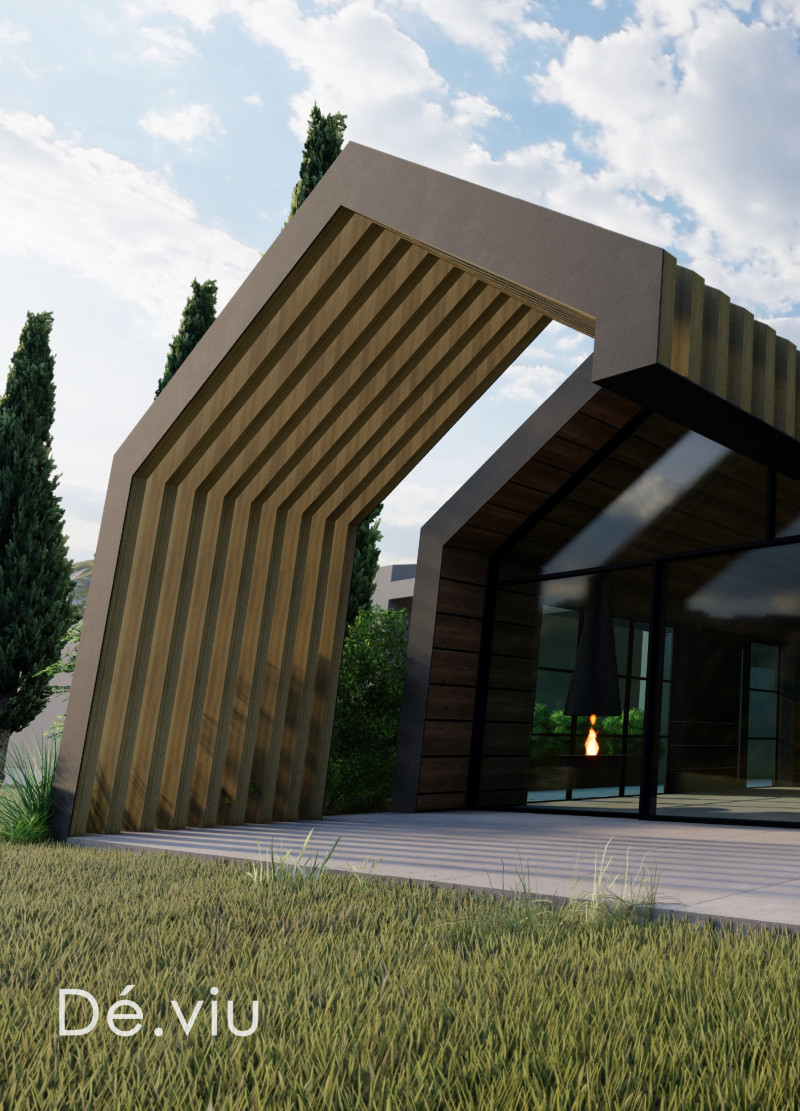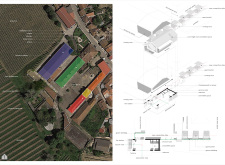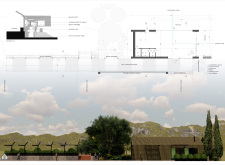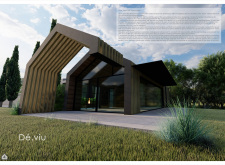5 key facts about this project
The design features a winery that harmonizes the essential functions of winemaking with a deep appreciation for its scenic vineyard setting. Its architecture aims to enhance the experience of guests by focusing on three core ideas: view, taste, and environment. Each area of the facility is carefully arranged, influencing how visitors interact with the space and each other.
Spatial Organization
The layout consists of distinct areas that contribute to the overall visitor experience. The tasting room acts as the heart of the winery, positioned to connect guests with both the interior of the building and the stunning landscape outside. Well-structured pathways guide visitors through the various spaces, ensuring easy navigation while promoting engagement with the surroundings.
Material Selection
Materials chosen for the construction reflect a commitment to durability and local craftsmanship. A local stone wall establishes a connection to traditional wine production and adds a sense of history to the design. Concrete is used for the pavement due to its strength and low upkeep needs, making it suitable for a facility frequented by visitors.
Sustainable Features
The winery also emphasizes sustainability in its design. The architecture uses insulation layers and waterproofing to protect against the elements. The reinforced concrete foundation enhances the building's stability, ensuring it can withstand environmental conditions. Features such as a vapor barrier and double layers of cork insulation further support energy efficiency and maintain a comfortable environment throughout the year.
Design Details
One of the most notable aspects is the large glass wall oriented southwest, offering superb views of the vineyard. This feature allows the interior to connect visually with the landscape beyond. Remarkably, the glass wall can retract, blending the indoor environment with the outdoor scenery. This flexibility enhances the tasting experience, inviting guests to enjoy wine while fully immersed in the lush vineyard surroundings.





















































